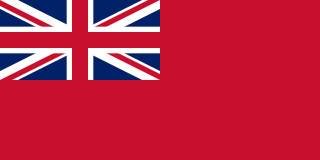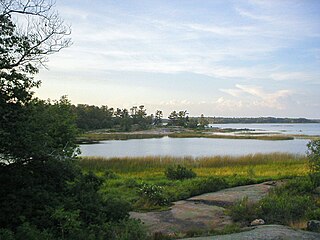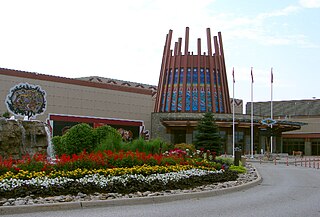Joseph Snake was an Ojibwe chief belonging to the Chippewas of Lakes Huron and Simcoe from sometime before 1842 until his death in 1861.

The Ojibwe, Ojibwa, Chippewa, or Saulteaux are an Anishinaabe people of Canada and the United States. They are one of the most numerous indigenous peoples north of the Rio Grande. In Canada, they are the second-largest First Nations population, surpassed only by the Cree. In the United States, they have the fifth-largest population among Native American peoples, surpassed in number only by the Navajo, Cherokee, Choctaw and Sioux.
Having relinquished virtually all of their territory west of Lake Simcoe to the government of Upper Canada in the Lake Simcoe–Lake Huron Purchase of 1815 [1] and the Lake Simcoe–Nottawasaga Purchase of 1818, [2] these Ojibwe converted to Methodism in 1828 and were persuaded by Lieutenant Governor John Colborne to settle permanently in 1830 in purpose-built villages at Coldwater and Atherley Narrows between Lakes Simcoe and Couchiching. [3] . At the same time, Colborne set aside Georgina Island, Snake Island, and Fox Island in Lake Simcoe as a reservation for the Ojibwe.

The Province of Upper Canada was a part of British Canada established in 1791 by the Kingdom of Great Britain, to govern the central third of the lands in British North America, formerly part of the Province of Quebec since 1763. Upper Canada included all of modern-day Southern Ontario and all those areas of Northern Ontario in the Pays d'en Haut which had formed part of New France, essentially the watersheds of the Ottawa River or Lakes Huron and Superior, excluding any lands within the watershed of Hudson Bay. The "upper" prefix in the name reflects its geographic position along the Great Lakes, mostly above the headwaters of the Saint Lawrence River, contrasted with Lower Canada to the northeast.
The Lake Simcoe–Lake Huron Purchase, registered as Crown Treaty Number Sixteen, was signed November 18, 1815 between the Ojibwa and the government of Upper Canada. It purchased a large portion of the lands between Lake Simcoe and Lake Huron, including all of the territory upon which the Penetanguishene Road had recently been cut.

Methodism, also known as the Methodist movement, is a group of historically related denominations of Protestant Christianity which derive their inspiration from the life and teachings of John Wesley. George Whitefield and John's brother Charles Wesley were also significant early leaders in the movement. It originated as a revival movement within the 18th-century Church of England and became a separate denomination after Wesley's death. The movement spread throughout the British Empire, the United States, and beyond because of vigorous missionary work, today claiming approximately 80 million adherents worldwide.
A change of government in 1836, with Francis Bond Head replacing Colborne as Lieutenant Governor, soon brought this "civilising" experiment to an end. Bond Head persuaded the Ojibwe to leave the Narrows-Coldwater corridor (which remained Crown land) in return for one-third of the proceeds of the anticipated sales of lots there to future European settlers. [4] In 1842, their leading chiefs, Musquakie (otherwise known as William Yellowhead), head chief and leader of the Narrows settlement, and John Aisance, leader of the Coldwater settlement, wrote to Governor General Charles Bagot protesting that Bond Head had not fully explained this purchase agreement, and had, in particular, not made it clear that it did not involve an upfront, lump-sum payment, nor that the Ojibwe would receive only one-third of the sale proceeds. [5] One of the four other chiefs who subscribed to this letter was Joseph Snake, whose signature occurs immediately after that of Musquakie, and before that of Aisance in the list.

Sir Francis Bond Head, 1st Baronet KCH PC, known as "Galloping Head", was Lieutenant-Governor of Upper Canada during the rebellion of 1837.
William Yellowhead, or "Musquakie" or "Misquuckkey", as he was known in his own Ojibwe language was the "head chief" of the Chippaweans of Lakes Huron and Simcoe and leader of the Deer clan of that people from 1817 until his death in 1864. He led his people in taking arms in defence of Upper Canada in the Upper Canada Rebellion, oversaw the sale of the bulk of their territory to the provincial government, and led them in their first attempts to adopt an agrarian way of life. Although the claims of several other persons have been advanced, it is generally believed that Musquakie is the origin of the name of the District Municipality of Muskoka.
John Aisance was a chief among the Chippewas of Lakes Huron and Simcoe and leader of the Otter clan of that people from at least 1815 until his death in 1847. He participated in the Lake Simcoe–Lake Huron Purchase in 1815, served the provincial government during the Upper Canada Rebellion, and was the first and founding chief of the Beausoleil First Nation.
As a result of the 1836 agreement, the Ojibwe were obliged to abandon their villages at the Narrows and Coldwater and make homes elsewhere. Whereas Musquakie led the Narrows band to a new settlement at nearby Rama in 1838, and Aisance led the Coldwater band to Beausoleil Island in Georgian Bay in 1842, it seems that the Ojibwe who had settled after 1830 on Snake Island and the other islands of Lake Simcoe remained in place with Joseph Snake as their chief. They sustained themselves by hunting and fishing, although a certain amount of farming was also taking place. [6] By 1858 this "Snake Island band" was regarded by the government as a distinct community from the Rama band (now the Chippewas of Rama First Nation) and the Beausoleil band (now the Beausoleil First Nation), [7] but they retained close links to Rama, whose Methodist preacher ministered to them. The band was the historical antecedent of the Chippewas of Georgina Island First Nation.

Mnjikaning First Nation 32 is an Anishinaabe reserve in Simcoe County, Ontario. It is the main reserve of the Chippewas of Rama First Nation.

Beausoleil Island is an 8-kilometre (5.0 mi) long island in the municipality of Georgian Bay, District Municipality of Muskoka in Central Ontario, Canada. Located in the Thirty Thousand Islands in Georgian Bay on Lake Huron near Port Severn, it is the largest island in Georgian Bay Islands National Park and is the only place in the park where camping is allowed. Beausoleil Island is also part of the Georgian Bay Littoral UNESCO Biosphere reserve.

Georgian Bay is a large bay of Lake Huron, located entirely within Ontario, Canada. The main body of the bay lies east of the Bruce Peninsula and Manitoulin Island. To its northwest is the North Channel.
Chief Joseph Snake died in 1861. [8] Chief Joseph Snake Road on Georgina Island was named for him.






